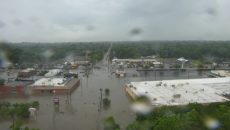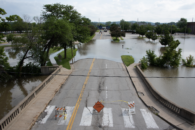Risk Rating 2.0 needed to save flood insurance
For over 50 years, the National Flood Insurance Program (NFIP) — a federally subsidized flood insurance program, managed by FEMA — has operated on the same set of risk assumptions through its Risk Rating system. That means, to this day, national flood insurance is operating on a methodology developed in the 1970s. A lot has changed since then. We’ve seen upticks in developments along waterfronts, we’ve seen increased severe weather events, and, as a result, we’ve seen a spike in payouts from the NFIP. The tide of premiums and payouts keeps rising, but the rate-setting remains anchored. The NFIP is barely keeping its head above water. Without a change to the risk rating system, the NFIP may be washed away.
The NFIP fills the first financial protection from flooding — insurance — one that is largely ignored by industry. Without the NFIP, most homeowners would be unable to buy flood insurance, as coverage is still excluded from nearly all standard private residential policies. Private home and property owners pay premiums to the NFIP, and they receive payouts when there is flood damage. The NFIP was initially authorized to borrow up to $1 billion from the U.S. Treasury to make payouts when premiums were insufficient. The expectation was that years with shortfalls would be balanced out by excess premium years. But now, the NFIP owes more than $23 billion to taxpayers because the NFIP continues to pay out more than it takes in in premiums.
In fact, according to FEMA, it would take decades of clear skies and no catastrophic weather events for the NFIP to recover its lost funds. And if the past few years have taught us anything, it’s that we cannot count on nature’s cooperation. Dozens of Missouri communities rely on the protection of NFIP, and every taxpayer should be concerned with the waste that is occurring.
In insurance, premium rates are built on risk. Thus, risk assessment is the most powerful tool available to accurately calculate premiums and payouts. Thankfully, a solution lies over the horizon. FEMA is rolling out Risk Rating 2.0, a modern approach to risk assessment. Risk Rating 2.0 is a new approach to understanding flood risk that will price each home individually, create a fair and equitable pricing scheme, and better prepare policyholders for potential flooding. It combines and averages multiple catastrophe computer models, uses more data sources and loss experiences, and it has been validated and supported by actuaries and scientists alike
Risk Rating 2.0 will generate annual insurance rates that more accurately reflect a property’s flood risk, leading to greater financial stability for the NFIP and strengthening the program’s ability to support flood survivors. Indeed, under Risk Rating 2.0, low and moderate-income homeowners will no longer be subsidizing insurance policies for high-risk beachfront condos or vacation homes that have been repeatedly flooded. From FEMA’s preliminary data, it is estimated that Risk Rating 2.0 (RR2.0) would lower insurance rates for more than one million policyholders nationwide. Meanwhile, Risk Rating 2.0 will save all taxpayers money because, as premiums are adjusted to accurately reflect risk, it will begin to correct the NFIP’s insolvency issues.
There is an ocean of reasons why RR2.0 should be implemented. In the past, rates set by the NFIP were largely based on whether a property is “in” or “out” of a designated flood hazard area and the timing of a community’s entry into the NFIP. This old way does not account for risk factors such as the property’s individual characteristics, including, elevation, location within the flood zone, distance from a source of potential flooding, the dynamics of the watershed drainage area, flood history, design, and type of foundation, cost of repair, and mitigation efforts; all important factors that determine flood risk
Further delay of Risk Rating 2.0 will equate to hundreds of millions of dollars of overpayments from single-family homeowners. Without the transition to Risk Rating 2.0, all policyholders would only see premium increases and a substantial amount would continue to unjustly overpay for flood insurance. Indeed, there would be collective overpayments of up to $500 million if RR2.0 implementation was delayed just one year.
Given the importance of NFIP to Missouri towns and cities throughout the state, the time has come to implement RR.2.0 immediately. We shouldn’t be waiting until the rain comes to get NFIP in order.

Maryann Manion is an assistant manager at a St. Louis small business as well as a real estate broker and grassroots activist. She resides in St. Louis with her husband, Lang.













